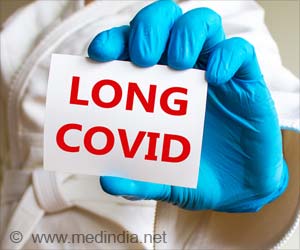Rock and roll stars seem happy living the motto: Life on the fast lane , except that very often this lane has only one end ;death.
Researchers at Liverpool John Moores University, whose report appears in the Journal of Epidemiology and Community Health have revealed startling findings; rock and pop stars are more than twice as likely to die a premature death as ordinary citizens of the same age.The team based their studies on a sample of North American and British musicians. They studied 1,064 stars from the rock, punk, rap, R&B, electronic and new age genres in the "All Time Top 1,000" albums published in 2000. They compared each artist's age at death with that of European and U.S. citizens of similar backgrounds, sex and ethnicity.
Lead author Mark Bellis, says his research showed the stereotype of rock stars is sadly, true. Recreational drugs and alcohol-fueled parties never fail to demand their pound of flesh.
The report found that between two and 25 years after the onset of fame, the risk of death was two to three times higher for music stars than for members of the general population matched for age, sex, nationality and ethnic background.
In all, 100 of the stars studied had died (7.3 percent of women and 9.6 percent of men). These included Elvis Presley, Jim Morrison, Kurt Cobain, Janis Joplin and Jimi Hendrix.
It was also seen that the average age of death was 42 for North American stars and 35 for European stars.
Advertisement
Meanwhile, industry observers say they are not surprised by these findings."Being a pop star is a crash-and-burn sort of lifestyle," says rock journalist and broadcaster John Aizlewood. "If you go into it, you want adulation. You want to respond to the crowd. You can't be a pop star in isolation. If you need that adulation, you obviously have other needs.
Advertisement
Dr. Tim Williams, a psychiatrist specializing in addiction at the University of Bristol, opines too that increased mortality might be a byproduct of the artistic personality.
"You could argue that rock stars and pop stars have a sensation-seeking personality, that they have this desire to put themselves in these terrifying situations — performing in front of a large group of people — that also makes them vulnerable to dependence on substances, which markedly increases mortality," he says.
In good news for aging rockers, the study found that after 25 years of fame, stars' death rates began to slide to normal — at least in Europe. A European star still living 25 years after achieving fame faces a similar mortality rate to the European public. U.S. artists, on the other hand, continue to die in greater numbers.
The study opined this "might be explained by differences in longer-term experience of fame, with more performing in later years ... continued media interest and associated stress and substance use in North American pop stars."
Additionally,Bellis says , "Many (U.S. musicians) die in poverty and there is not the same type of public-health provision there" as in Europe.
Bellis goes on to stress : "The music business would do well to take the health risks of substance abuse and risk-taking behaviors more seriously.
"This is not only because of the long-term effects on the stars themselves, but also because of the influence these stars exert on others”, he warns.
According to Dr. Francis Keaney, an expert in addiction treatment at the Institute of Psychiatry at King's College London, the death rates are likely to fall in the future.
This is because "People are better educated about drug and alcohol abuse than they were in the past," Keaney says.
"Thirty years ago, you could name dozens of people living hedonistic lifestyles in the music industry. Today there are far fewer”, he adds.
Source-Medindia
ANN/J





